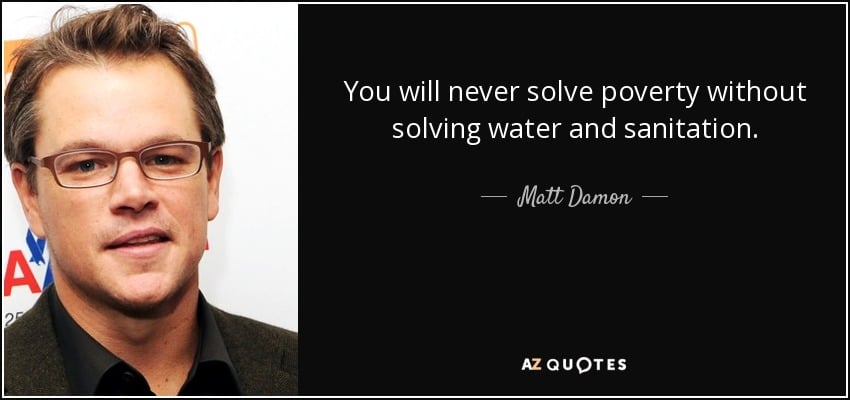The Holiday season means many different things for people. Whether it’s getting everyone the perfect gift, spending time with family, or preparing favorite foods for friends, the holidays are a time of giving. Our family here at Tata & Howard takes holiday giving to heart. We understand how important philanthropy is to both our local and global community. For this special time of year, we are looking at some of the most charitable and full-hearted organizations we’ve had the honor to support.
DARE Family Services

Since 1964, DARE Family Services has been committed to improving the lives of children who have been abused or neglected. By providing a family-based setting, they give children the opportunity to recover and live healthy, happy lives. Every holiday season, DARE Family Services reaches out to communities for gift donations to help kids experience a memorable holiday – in many cases, for the first time in their lives. At Tata & Howard, our employee-owners take DARE’s mission to heart and bring gifts to put under our DARE Giving Tree for children in need. Fortunately, we are one of many organizations and individuals who support DARE and their determination to better the lives of disadvantaged and neglected children. They help thousands of kids every year and we thank them for their generosity.
Dana-Farber Cancer Institute

The Dana-Farber Cancer Institute, along with the Jimmy Fund, is home to groundbreaking cancer discoveries. They are one of the greatest examples of a philanthropic organization working for a worthy cause – curing cancer. There are seemingly endless ways Dana-Farber and the Jimmy Fund raise money and resources to give hope to families affected by cancer, especially during the holidays. Tata & Howard is a proud supporter of Dana-Farber and donated $5,300 towards cancer research this past November, and donated another $1,500 this week in lieu of sending printed holiday cards to clients and friends. Some of our employee-owners are doing their own part to help them out as well. Our Marketing Communications Manager Heidi White participated in their “Run Any Race” program and raised over $3,000 by running Ragnar’s Reach the Beach in New Hampshire this past September. Also, T&H Engineer Molly Coughlin is currently training for the 2017 Boston Marathon to raise money for Dana-Farber and the Jimmy Fund. Her personal goal is to raise $15,850 and we are all cheering her on. Go Molly!
Water For People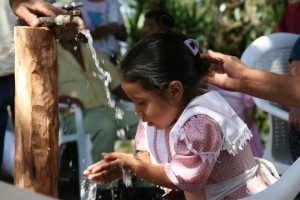
Over 1.8 billion people globally lack access to safe drinking water, and Water For People is looking to change that by committing to provide long-lasting water and sanitation infrastructure for communities in need. They operate in nine countries and have helped over four million people live better lives by providing access to clean water. To make this happen, Water For People works with communities, governments, and business owners to ensure reliable, safe water for future generations. In support of their passion for clean water, many employee-owners at Tata & Howard contribute to Water For People through automatic bi-weekly payroll deductions, which Tata & Howard matches dollar for dollar. In this way, we are able to do our part to realize Water For People’s mission of clean water for everyone, forever.
The Navajo Water Project
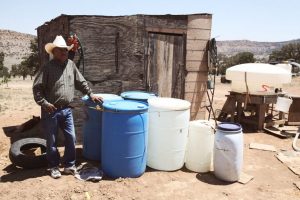
Speaking of clean water for everyone, the Navajo Water Project is an amazing organization that seeks to solve a little-known water problem. Of the nearly 200,000 Navajo population right here in America, 40% do not have running water – which has created a cycle of poverty that limits health, education, and economic security. As a subsidiary of DIGDEEP and primarily funded through private donors, the Navajo Water Project works with communities in Navajo Nation to install systems that bring running water and electricity into homes. The water is delivered via truck and safely stored in large cisterns, from which it is pumped into a sink and shower inside the home. The organization also installs solar energy systems to power the pumps and lights inside. With their determination and adequate funding, The Navajo Water Project expects to install home water systems in every Navajo home in need by 2018. Since we learned of the plight of the Navajo people in 2015, Tata & Howard has actively supported the Navajo Water Project. In 2017, which is our 25th anniversary year, we are organizing a national virtual 5K to raise money for this incredible organization. Participants will receive a beautiful medal and 100% of the cost of registration will go directly to the Navajo Water Project. Stay tuned for details of this exciting event!
The holiday season is the perfect time to give to others and to help the community, both locally and globally. Even the smallest gesture of generosity helps others in significant ways. And the best gift a person can receive is hope — and that is exactly what DARE Family Services, the Dana-Farber Cancer Institute, the Navajo Water Project, and Water for People are all about. We here at Tata & Howard encourage everyone to give to someone in need and celebrate generosity this holiday season. Happy Holidays to you and yours!

 It is widely known how important water is to our lives and the world we live in. Our body and planet is comprised of about 70% water – making it seem like it is easily accessible and plentiful. However, when you rule out our oceans and ice caps, less than 1% of all the water on Earth is drinkable. Of that less than 1%, groundwater only accounts for 0.28% of fresh water around the globe. Safe drinking water is a privilege we often take for granted while we brush our teeth or drink a glass of water in the morning. While we are giving thanks to our family, friends, and food during Thanksgiving, we should also give big thanks for our clean drinking water and the people who make it happen.
It is widely known how important water is to our lives and the world we live in. Our body and planet is comprised of about 70% water – making it seem like it is easily accessible and plentiful. However, when you rule out our oceans and ice caps, less than 1% of all the water on Earth is drinkable. Of that less than 1%, groundwater only accounts for 0.28% of fresh water around the globe. Safe drinking water is a privilege we often take for granted while we brush our teeth or drink a glass of water in the morning. While we are giving thanks to our family, friends, and food during Thanksgiving, we should also give big thanks for our clean drinking water and the people who make it happen.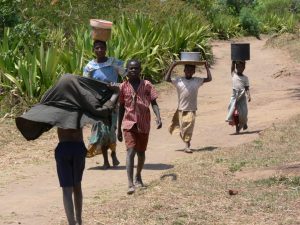
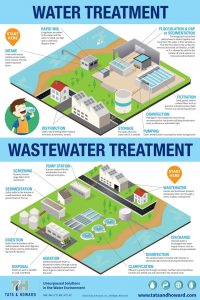
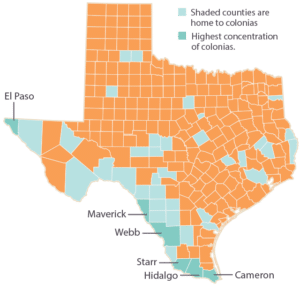 Recently in the news, we have heard a lot about the nationwide
Recently in the news, we have heard a lot about the nationwide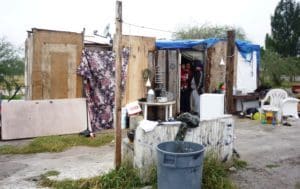
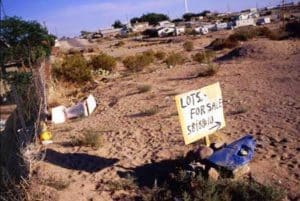 Fortunately, Texas passed the Colonias Fair Land Sales Act in 1995 to somewhat protect colonia residents who are forced to finance through a contract for deed. The Act requires developers to record the contract with the county clerk and to provide property owners with an annual statement that shows the amount paid towards the loan and taxes as well as the number of remaining payments. The Act also forces developers to itemize which services, such as water, wastewater, and electricity, are available, and whether the land is located in a flood plain.
Fortunately, Texas passed the Colonias Fair Land Sales Act in 1995 to somewhat protect colonia residents who are forced to finance through a contract for deed. The Act requires developers to record the contract with the county clerk and to provide property owners with an annual statement that shows the amount paid towards the loan and taxes as well as the number of remaining payments. The Act also forces developers to itemize which services, such as water, wastewater, and electricity, are available, and whether the land is located in a flood plain.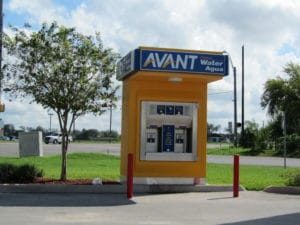

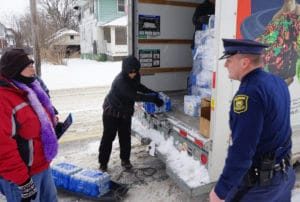 Part three of our four-part series on water crises in America is on lead contamination. Instances of lead in drinking water, such as the situation in Flint, Michigan, have become a hot topic in the media. Lead in drinking water is a problem that reaches far beyond the disaster in Flint, with the Environmental Protection Agency (EPA) stating that roughly 10 million American homes and buildings still receive water from service lines that are at least partially lead. When water has high acidity or low mineral content, it can cause these service lines to corrode and leach lead into the water supply. Without mitigation, water from lead service lines has the potential to cause adverse health effects,
Part three of our four-part series on water crises in America is on lead contamination. Instances of lead in drinking water, such as the situation in Flint, Michigan, have become a hot topic in the media. Lead in drinking water is a problem that reaches far beyond the disaster in Flint, with the Environmental Protection Agency (EPA) stating that roughly 10 million American homes and buildings still receive water from service lines that are at least partially lead. When water has high acidity or low mineral content, it can cause these service lines to corrode and leach lead into the water supply. Without mitigation, water from lead service lines has the potential to cause adverse health effects, 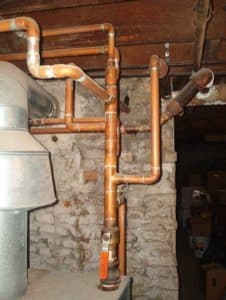
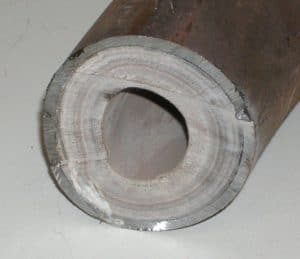
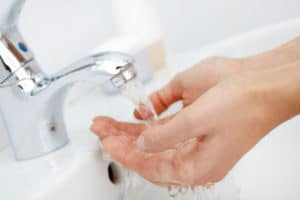
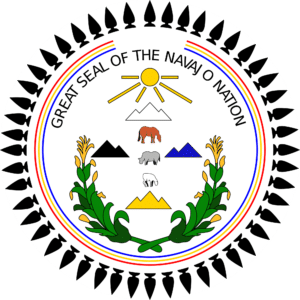 Water poverty has long been considered a global crisis, with over 783 million people worldwide — that’s one in nine people — lacking access to a safe, clean water supply. Over half of the world’s hospital beds are filled with people afflicted with water-related illness, and over 80% of illnesses in sub-Saharan Africa are directly attributable to poor water and sanitation conditions. There are a plethora of charities dedicated to solving the global water crisis, including Tata & Howard’s and AWWA’s charity of choice
Water poverty has long been considered a global crisis, with over 783 million people worldwide — that’s one in nine people — lacking access to a safe, clean water supply. Over half of the world’s hospital beds are filled with people afflicted with water-related illness, and over 80% of illnesses in sub-Saharan Africa are directly attributable to poor water and sanitation conditions. There are a plethora of charities dedicated to solving the global water crisis, including Tata & Howard’s and AWWA’s charity of choice 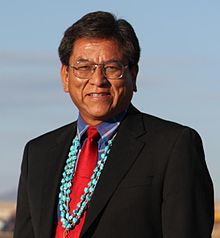
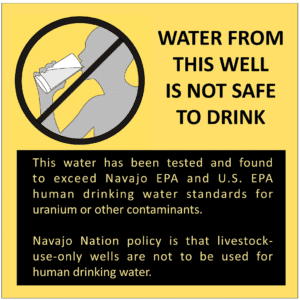
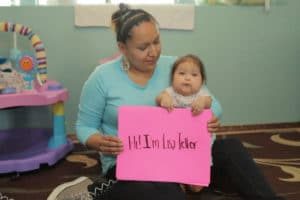
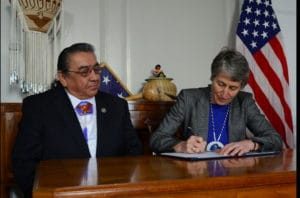
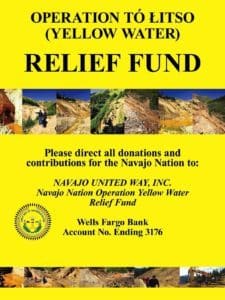 The answer to solving the water crisis of Navajo Nation is not simple. Bringing safe, clean water to the people of Navajo Nation will require both public and private investment. It will also require fair legislation that allows the Navajo to keep rights to water on their land while requiring the federal government to fund the
The answer to solving the water crisis of Navajo Nation is not simple. Bringing safe, clean water to the people of Navajo Nation will require both public and private investment. It will also require fair legislation that allows the Navajo to keep rights to water on their land while requiring the federal government to fund the 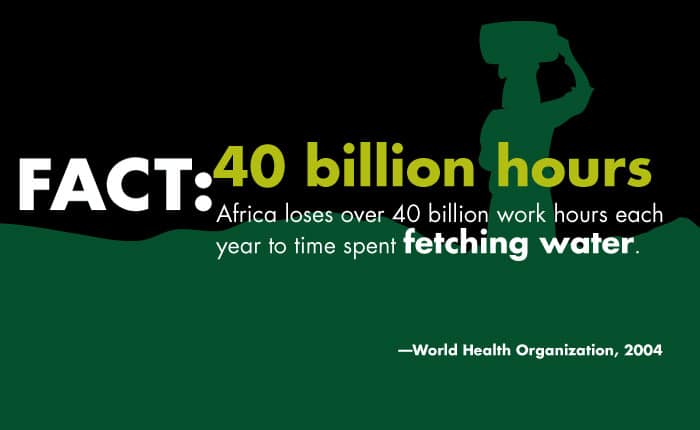 First, let’s look at some facts:
First, let’s look at some facts: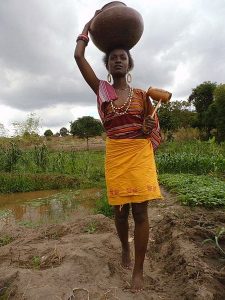 663 million people — or 1 in 9 — don’t have access to safe drinking water.
663 million people — or 1 in 9 — don’t have access to safe drinking water.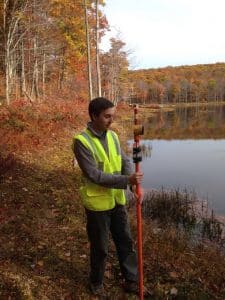 Water is also an integral part of our jobs here at Tata & Howard. As a water engineering firm, we strive to improve our water supply and to create a safe, sustainable future for generations to come. As we have recently seen in communities like Flint, Michigan and Sebring, Ohio, unsafe water directly affects the health of both residents and the economy. We accept that it is our diligent duty to provide the most efficient and meticulous engineering service to municipalities and water companies to safeguard our nation’s water supply and the health of residents. We work cohesively as a team to foster innovation and to provide a series of checks and balances, while each and every project on which we work is technically reviewed by a senior engineer not associated with the project.
Water is also an integral part of our jobs here at Tata & Howard. As a water engineering firm, we strive to improve our water supply and to create a safe, sustainable future for generations to come. As we have recently seen in communities like Flint, Michigan and Sebring, Ohio, unsafe water directly affects the health of both residents and the economy. We accept that it is our diligent duty to provide the most efficient and meticulous engineering service to municipalities and water companies to safeguard our nation’s water supply and the health of residents. We work cohesively as a team to foster innovation and to provide a series of checks and balances, while each and every project on which we work is technically reviewed by a senior engineer not associated with the project.